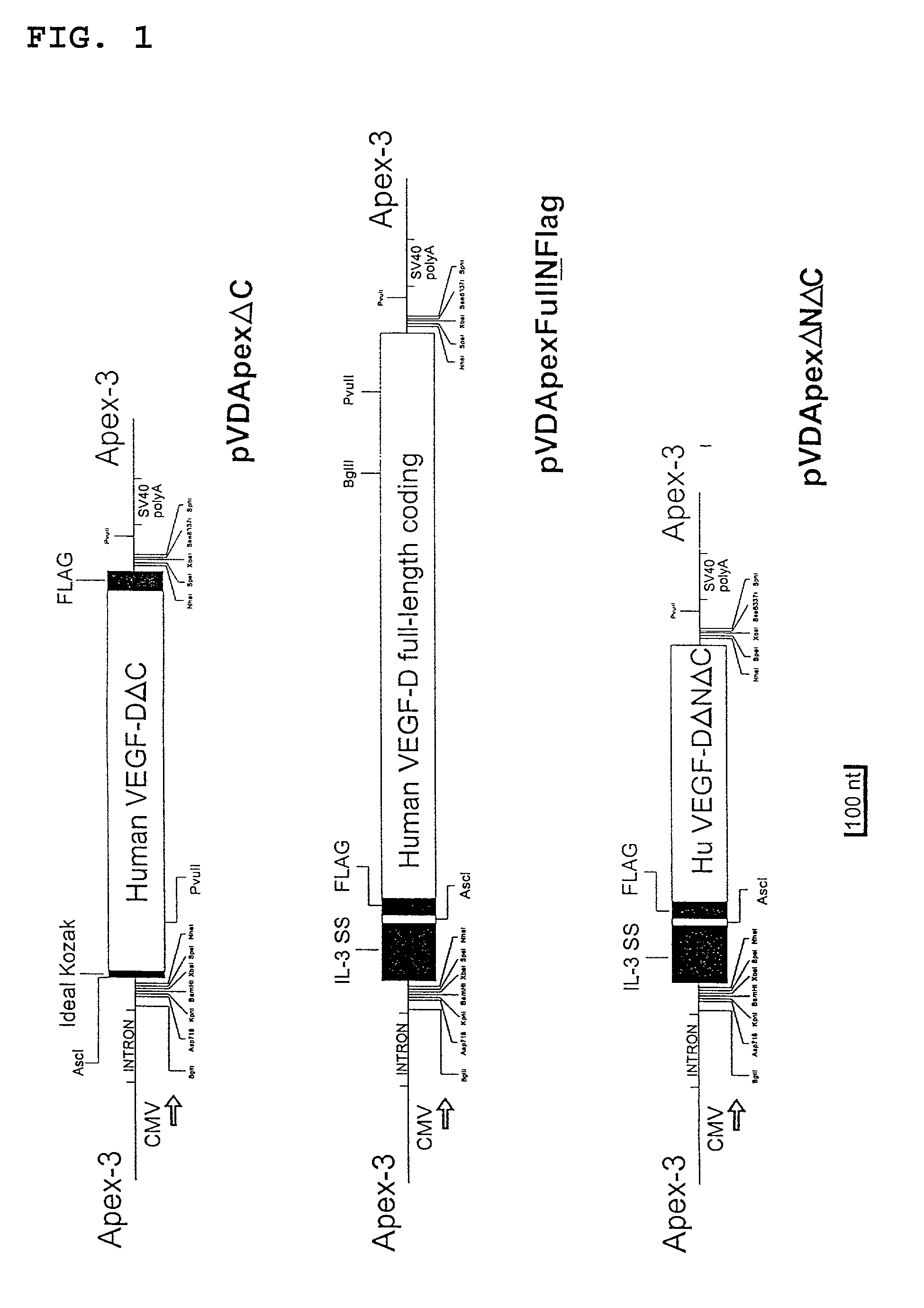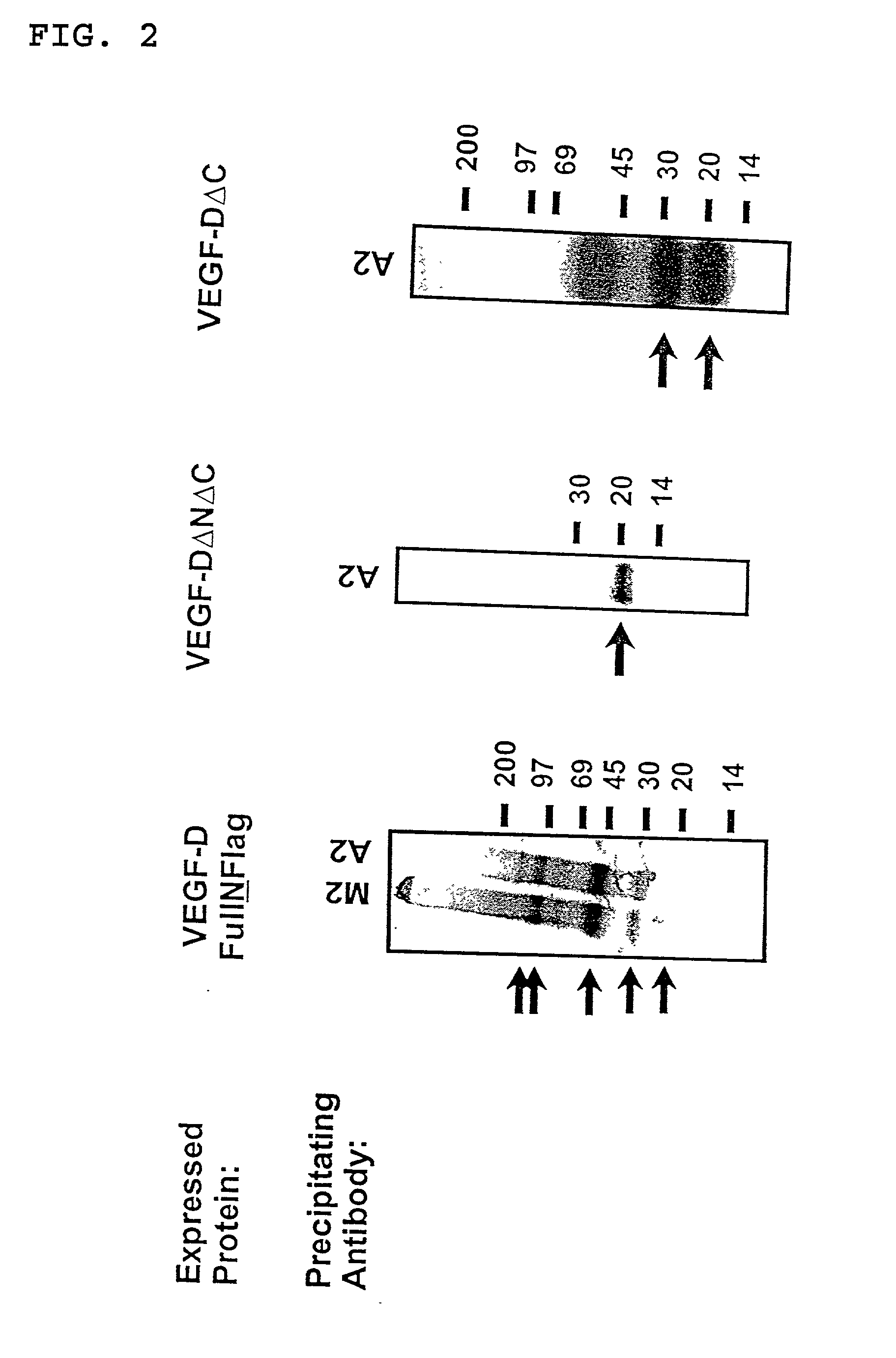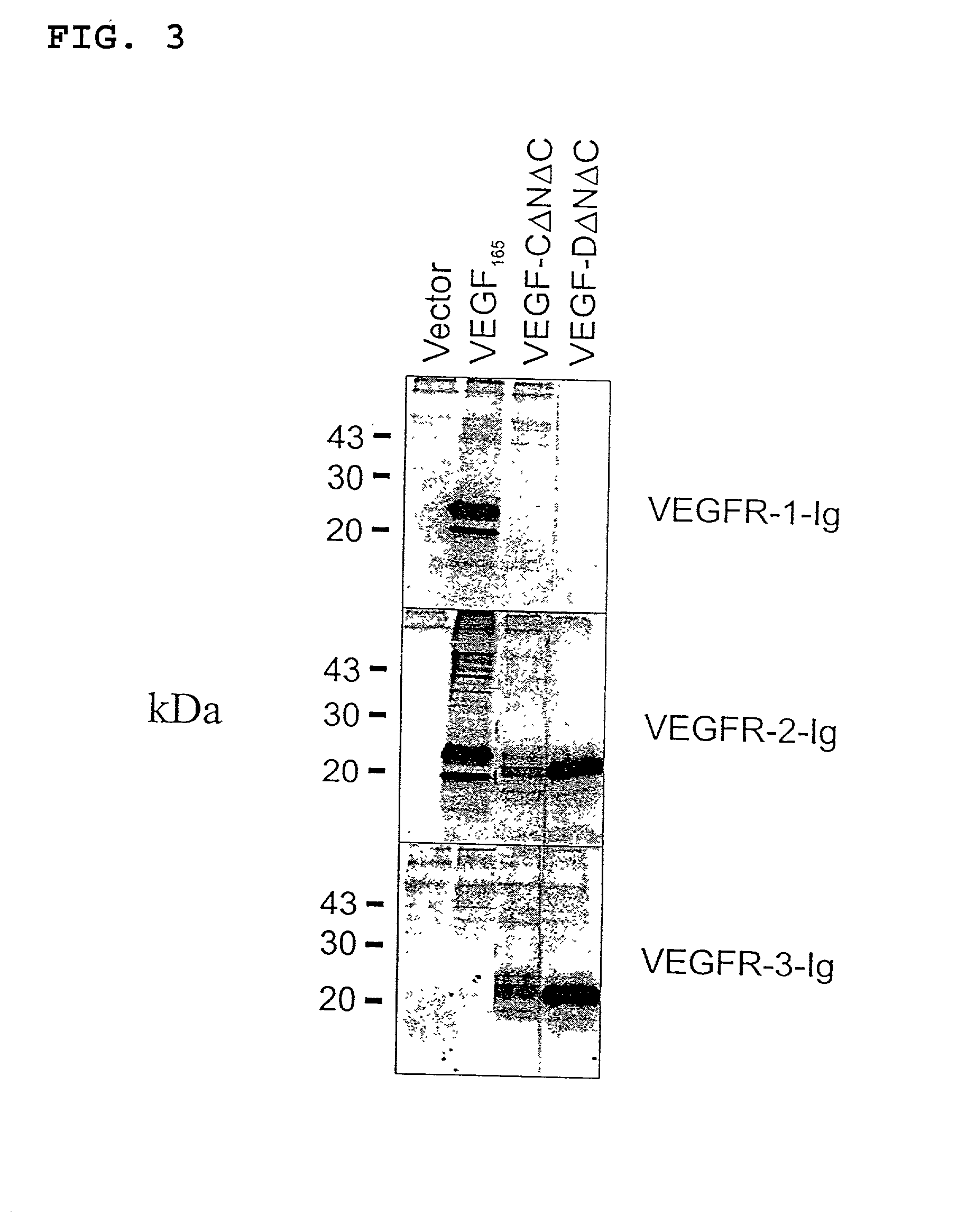Expression vectors and cell lines expressing vascular endothelial growth factor d, and method of treating melanomas
a technology of vascular endothelial growth factor and expression vector, which is applied in the direction of antibody mimetics/scaffolds, peptide/protein ingredients, fusion polypeptides, etc., can solve the problem of unidentified ligands for ties, and achieve the effects of stimulating healing, enhancing acceptance and/or healing of skin grafts, and promoting lymphangiogenesis
- Summary
- Abstract
- Description
- Claims
- Application Information
AI Technical Summary
Benefits of technology
Problems solved by technology
Method used
Image
Examples
example 2
Binding of VEGF-D.DELTA.N.DELTA.C to soluble VEGF receptors
[0068] To further assess the interactions between VEGF-D and the VEGF receptors, VEGF-D.DELTA.N.DELTA.C was tested for its capacity to bind to soluble immunoglobulin fusion proteins comprising the extracellular domains of human VEGFR-1, human VEGFR-2 and human VEGFR-3. The corresponding fragment of VEGF-C, VEGF-C.DELTA.N.DELTA.C, was used for comparison. For binding experiments, 293T human embryonal kidney cells were transfected with plasmids encoding the soluble receptor-immunoglobulin fusion proteins VEGFR-1-Ig, VEGFR-2-Ig or VEGFR-3-Ig using the calcium-phosphate (Ca-phosphate) method. In these fusion proteins, the extracellular domain of the relevant VEGF receptor is fused to the Fc portion of human IgG.sub.1. The cells were incubated for 24 hours after transfection, washed with Dulbecco's Modified Eagle's Medium (DMEM) containing 0.2% bovine serum albumin (BSA) and starved for 24 hours. Media were then collected and cla...
example 3
In Situ Hybridization Studies of VEGF-D Gene Expression in Mouse Embryos
[0071] The pattern of VEGF-D gene expression was studied by in situ hybridization using a radiolabeled antisense RNA probe corresponding to nucleotides 1 to 340 of the mouse VEGF-D1 cDNA, whose sequence is shown in FIG. 4. The antisense RNA was synthesized by in vitro transcription with T3 RNA polymerase and [.sup.35S]UTP.alpha.s. Mouse VEGF-D is fully described in International Patent application PCT / US97 / 14696. This antisense RNA probe was hybridized to paraffin-embedded tissue sections of mouse embryos at post-coital day 15.5. The labeled sections were subjected to autoradiography for 2 days. The resulting autoradiographs for sections hybridized to the antisense RNA and to complementary sense RNA (as negative control) are shown in FIG. 5. In FIG. 5, "L" denotes lung and "Sk" denotes skin, and the two tissue sections shown are serial sections. Strong signals for VEGF-D mRNA were detected in the developing lung...
example 4
Production of Monoclonal Antibodies That Bind to Human VEGF-D
[0075] Monoclonal antibodies to VEGF-D.DELTA.N.DELTA.C were raised in mice. VEGF-D.DELTA.N.DELTA.C includes the amino acid sequence of the VHD of VEGF-D and is similar in sequence to all other members of the VEGF family. Therefore, it is thought that the bioactive portion of VEGF-D likely resides in the VHD. A DNA fragment encoding a truncated portion of human VEGF-D from residue 93 to 201, i.e. with the N- and C-terminal regions removed, was amplified by polymerase chain reaction (PCR) with Pfu DNA polymerase, using as template a plasmid comprising full-length human VEGF-D cDNA. The amplified DNA fragment, the sequence of which was confirmed by nucleotide sequencing, was then inserted into the expression vector pEFBOSSFLAG (a gift from Dr. Clare McFarlane at the Walter and Eliza Hall Institute for Medical Research (WEHI), Melbourne, Australia) to give rise to a plasmid designated pEFBOSVEGF-D.DELTA.N.DELTA.C. The pEFBOSSF...
PUM
| Property | Measurement | Unit |
|---|---|---|
| thick | aaaaa | aaaaa |
| pH | aaaaa | aaaaa |
| molecular weights | aaaaa | aaaaa |
Abstract
Description
Claims
Application Information
 Login to View More
Login to View More - R&D
- Intellectual Property
- Life Sciences
- Materials
- Tech Scout
- Unparalleled Data Quality
- Higher Quality Content
- 60% Fewer Hallucinations
Browse by: Latest US Patents, China's latest patents, Technical Efficacy Thesaurus, Application Domain, Technology Topic, Popular Technical Reports.
© 2025 PatSnap. All rights reserved.Legal|Privacy policy|Modern Slavery Act Transparency Statement|Sitemap|About US| Contact US: help@patsnap.com



